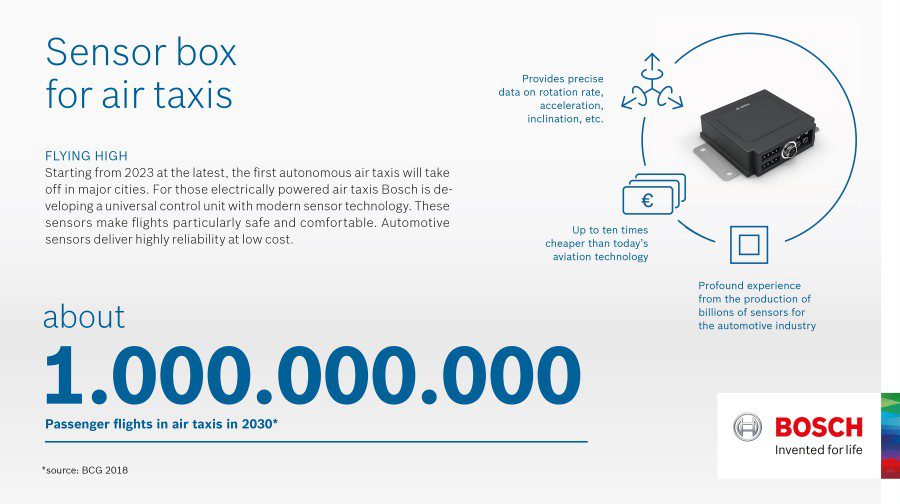Don’t look now, but in a decade the skies above our head in big cities might be getting busy – with air-borne commuters. According to some predictions, there could be more than one billion electric air taxi flights completed across the world by 2030, in an industry predicted to be worth more than $2 trillion.
The potential 1 billion electric air taxi flights by 2030 is predicted by Boston Consulting Group, which points to increased traffic congestion that will force electric transport off the ground and into the skies.
Air taxis – such as Lilium’s all-electric 5-seater praised by Tesla CEO and founder Elon Musk last week – are set to start testing in locations such as Dubai, Los Angeles and Singapore next year, and may be operating in other major cities within 4 years.
However, they face major challenges in obtaining regulatory approvals, as well as the infrastructure and sensors to ensure they fly safely in a low altitude environment. Some major companies are already climbing on board.
“The first flying taxis are set to take off in major cities starting in 2023, at the latest. Bosch plans to play a leading role in shaping this future market,” said Harald Kröger, president of the Bosch Automotive Electronics division in a statement issued by the company.
The potential for the air taxi market, according to financial services firm Morgan Stanley, could reach up to 1.35 trillion euros ($A2.2 trillion) by 2040, and Bosch believes the potential for its sensors is significant.

Marcus Parentis, the head of Bosch’s technology team says that a sensor box being developed by his team could provide a solution for air taxis at a fraction of the cost of current sensors built for the aerospace field.
Created from components the tech giant already has in its stable of automotive components, Bosch’s “universal control unit” is intended to be used in air taxis, effectively “teaching cars to fly”.
“Through our Bosch solution, we aim to make civil aviation with flying taxis affordable for a wide range of providers,” says Parentis.
From a technical perspective, the box – known as a MEMS, which stands for microelectromechanical systems – contains numerous sensors that in cars are used to sense acceleration and direction of travel.
The MEMS box for air taxis created by Bosch goes further, with sensors to measure aeronautical aspects such as yaw, pitch and roll, while magnetic sensors monitor compass headings.

Parentis says that discussions with possible users of the technology has been positive.
“We are talking to air taxi manufacturers from the aerospace and automotive industries, as well as with start-ups that build air vehicles and are looking to provide sharing services,” Parentis says.
For those who doubt the viability of taxis flying through metropolis aerospace, Parentis says the potential to ease commute times and congestion will ensure the place of air taxis as a future transport mode.
“Compared to today’s means of transportation, flying taxis save time on trips of 10 kilometres or more, with a maximum range of up to 300 kilometers,” Parentis says.
“The question isn’t whether flying taxis will become reality, but when.”
See also the latest episode of The Driven podcast for an interview with Simon Hackett, the owner of one of two electric planes in Australia, and his views on the future of electric flight.

Bridie Schmidt is associate editor for The Driven, sister site of Renew Economy. She has been writing about electric vehicles since 2018, and has a keen interest in the role that zero-emissions transport has to play in sustainability. She has participated in podcasts such as Download This Show with Marc Fennell and Shirtloads of Science with Karl Kruszelnicki and is co-organiser of the Northern Rivers Electric Vehicle Forum. Bridie also owns a Tesla Model Y and has it available for hire on evee.com.au.

